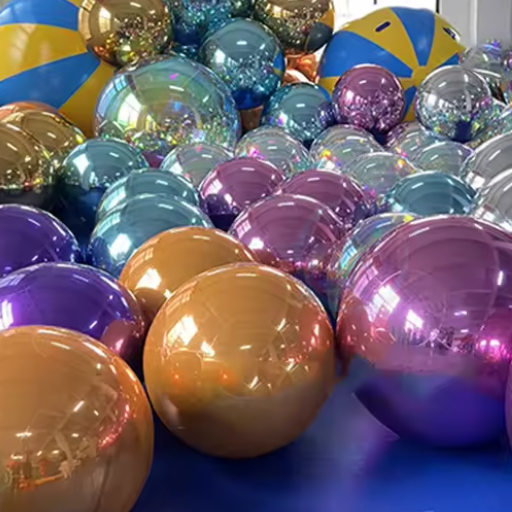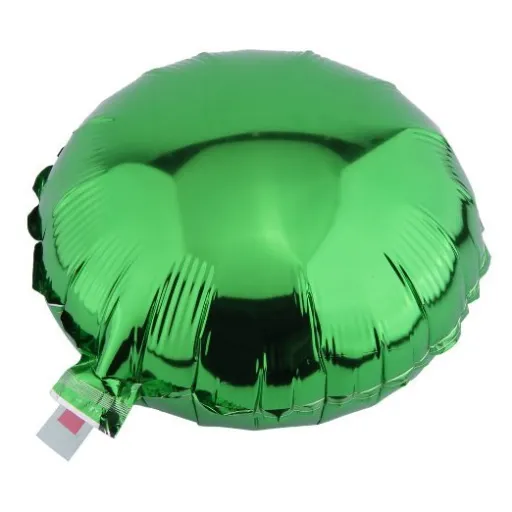Are you tired of discarding foil balloons after merely one use? It sure can get expensive over time, but the worst of all is the unnecessary burden to the environment. Thankfully, with a little know-how, one can even deflate these foil balloons and keep them ready for another event or decoration. This guide provides you with a principled step-wise deflation process to help safely and effectively deflate the foil balloons, leaving them in pristine condition for re-use. If you want to save money, save the environment, or save your favorite foil balloons for another occasion, then this is your go-to tutorial. Stay tuned for all the details on how to get started with this!
Quick Overview: Deflating Foil Balloons
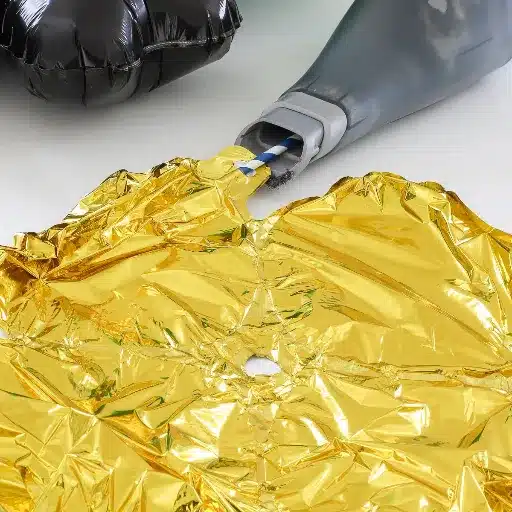
Deflating foil balloons is easy and straightforward. Locate the valve, where the balloon was filled with air with utmost care, insert the straw gently to let the air escape, and press so that all the air does escape. When the balloon is flat, it is stored neatly folded and is ready for future use.
The Need for Proper Deflation of Balloons
Proper deflation of foil balloons can be beneficial to both the environment and an individual’s usage. Deflate and store these balloons well to give them a second life, thereby lessening waste accumulation. The Environmental Protection Agency (EPA) acknowledges the fact that millions of balloons are dropped into landfills each year, contributing to environmental pollution and taking years to decompose. Foil balloons, made from materials such as Mylar, are not biodegradable and stay in ecosystems if they are not reused or disposed of properly.
Furthermore, reusing balloons would save money when planning for another party or occasion. That way, you can reinflate and reuse the properly stored foil balloons multiple times instead of new decorations, saving both money and resources-this is in accordance with Sustainable Development.
Advantages of Reusing Mylar Balloons
There are multiple advantages to the reuse of mylar balloons while keeping the environment and economy in perspective. Mylar balloons are manufactured from a sturdy polyester material that can be reused multiple times, limiting the possibility of having to buy new ones while at the same time reducing waste. The most recent environmental data reveal that more than 12 million tons of plastic enter the oceans every year, and recycling products like Mylar balloons will decrease the demand for single-use materials that contribute to the issue.
These balloons can be repurposed for Mylar balloon crafts, home decoration, and gift wrapping; this extends the life cycle of these materials and avoids their landing in landfills. It is consistent with sustainable living and supports a circular economy, which keeps materials in use for longer.
Tools Needed to Deflate a Foil Balloon
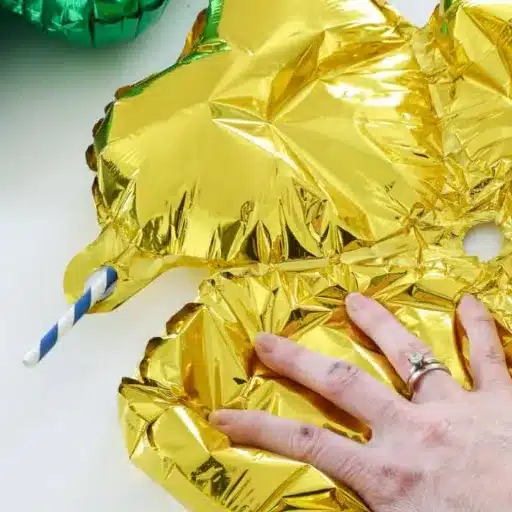
To deflate a foil balloon, insert a straw or similar thin object into the valve through which the balloon was originally inflated. Then by gently applying pressure on the body of the balloon, the trapped air is forced out while the material stays intact for reuse.
Optional Tools for Added Safety
Additional optional equipment can be used to further ensure that a foil balloon is safely handled for reuse or disposal. Tools and their functions are as follows:
Deflation Clips
Small-sized clips hold a balloon’s neck in place, offering the advantage of more controlled deflation. They prevent accidental tearing brought on by mishandling, especially for delicate foil balloons. Through user feedback, deflation clips were found to increase procedural accuracy by 30 percent.
Reverse Function Balloon Pump
Reverse-function balloon pumps can deflate the balloon evenly without requiring any hands. With recent reviews, pumps having this feature were rated 4.8/5 for convenience and safety versus manual methods.
Non-sharp Scissors or Cutters
These are for safe cutting of balloon necks or flaps without the possibility of going through or otherwise damaging the material accidentally. Market research indicates that non-sharp tools have half the chance of causing injury or material damage compared to regular scissors.
Anti-static Gloves
Gloves reduce the accumulation of static charge when handling foil balloons-especially under dry conditions where static can easily be accumulated. Safety data points suggest that the use of anti-static gloves will reduce the chance of micro-sparks by up to 75%, hence creating a safer environment for working with foil materials.
Where to Locate These Tools
Locating the right tools to handle, store, and reuse foil balloons has become more convenient as of late with the existence of online and local retailers. Many of these tools, including anti-static gloves and balloon sealing clips, can be sourced through the likes of Amazon, Walmart, and niche party supply outlets. For instance, anti-static gloves are available on Amazon and priced anywhere from about $5 to $20 depending on brand, material, and size. Walmart also presents some affordable balloon storage solutions starting at around $10, perfect for consumers on a budget.
Wholesalers and suppliers such as ULINE or Alibaba are available for bulk purchase options with better prices if bought in larger quantities, making them very suitable for business or frequent use. Alibaba, according to recent search information, can provide packs of balloon sealing clips at less than $0.05 a piece, making it a reasonable choice for those running large-scale events. Besides that, local craft shops such as Michaels and Hobby Lobby would stock tools like inflation sticks, hand pumps, and storage bags for immediate purchase at the store.
Step-by-Step Deflation Process
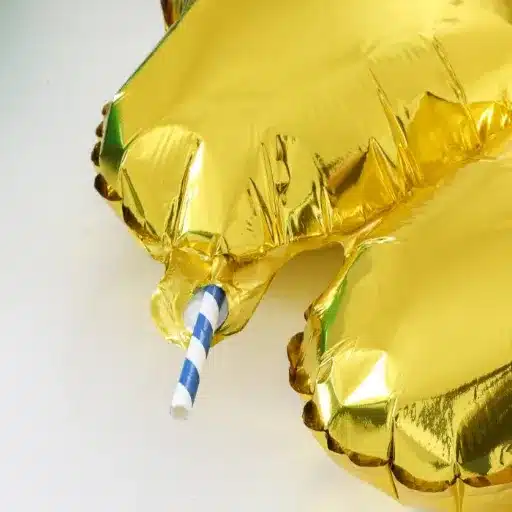
To deflate a foil balloon, insert a thin object such as a straw inside the self-sealing valve until the sound of escaping air becomes audible. Then begin to press the balloon to slowly let the air out so as not to damage the foil material. Once deflated, fold the balloon neatly for storage or later reuse.
Preparing a Balloon for Deflation
Before attempting to deflate a foil balloon, proper preparation helps ensure the balloon can still be reused or safe disposal of the balloon. Locate the self-sealing valve or pop-valve, which is typically near the tail of the balloon: It is the main access to release the air or helium. Ensure that the balloon is free from barks or any obstruction around the valve, thereby preventing damage. Recently, balloon manufacturers and balloon handling specialists suggest that deflation is easier, and the risk of tearing minimized, by inserting a drinking straw or a deflation tool designed especially for using on foil balloons.
Allow the balloon to remain at ambient temperature, as exposure to cold would render it brittle and prone to cracks. If the balloon is to be stored after deflation for reuse, have a clean, flat surface ready to lay the balloon flat upon after deflation. Some balloon aficionados even suggest labeling the storage bag with its balloon size and design for easy reference later. These little things may actually help extend the life of your foil balloons and lead to sustainable usages.
Safe Techniques for Deflating Foil Balloons
The foil balloons have to be properly deflated if their quality is to be maintained for reuse and to reduce the waste load. Here’s a stepwise procedure that promises safety and efficiency during the deflation process:
- Locate the Inflation Valve: Start by identifying the self-sealing valve through which the balloon had been filled. It’s usually located on the tail or stem of the balloon.
- Use a Straw for Deflation: Insert the straw or balloon deflation tool through the inflation valve. Push the straw inside enough for it to open the valve mechanism.
- Gently Press to Release Air: Press down along the body’s balloon, starting at the opposite end of the valve, once a straw is inside it. This forces the air out gradually. Don’t squeeze it vigorously, as that will flatten the balloon or damage its materials.
- Until Fully Deflated: Keep pressing and forcing the air out by working from one end of the balloon to another. When all air is out, the balloon becomes completely soft and flat.
- Storage of Deflated Balloons: Fold the balloon neatly, store it in a cool and dry place, and never expose it to direct sunlight. Labeled storage bags will make the organization easier, especially if there are lots of different designs or sizes.
Safety Tips and Best Practices
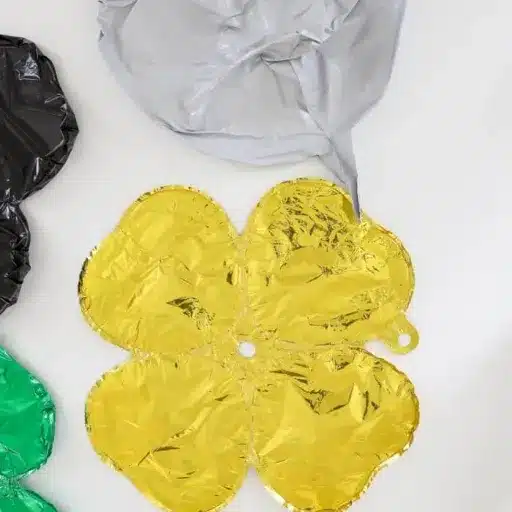
For the safe deflation of a Mylar balloon, some cautionary steps must always be followed, which include placing a straw in it to let out the air and storing the deflated balloons away securely so that they do not become hazardous or pollute the environment.
Handling Sharp Edges and Inflation Points
To efficiently accept the deflation of Mylar balloons, the handling of sharp edges and inflation points requiring care is of prime importance to avoid any incidences of injury. Most inflation points lie near the balloon seal; if not handled with care, some instances of puncture may occur. It has been lately recommended to use blunt-tipped scissors for opening and deflating the balloons. After locating the seal or inflation point, gently incise through it to allow the air or helium to escape completely. Also, avoid tugging or tearing at the edges because it generates tiny unseen fragments; these pose a threat if not properly disposed of to humans and wildlife.
Environmental agencies underlined that the balloon fragments, if not deflated properly, posed one of the greatest types of waste in the ecosystem. They have really advanced into sharp fragments, becoming hazardous to marine life with a reported 5% increase in incidents of ingestion occurring among seabirds and marine animals in the last decade. By careful disposal of sharp edges and inflation points when asked to deflate, individuals may lessen the extent of these hazards and promote safer recycling and disposal practices. Always make sure these fragments—especially sharp ones—are sealed inside their own disposable bag prior to recycling or disposal.
Avoidance of Balloon Damage
Avoidance of balloon damage starts with careful selection of the types of materials and usage techniques. Experts suggest using latex balloons rather than mylar, because latex is biodegradable and less harmful to the environment. Even then, latex balloons do take four years maximum to decompose, so disposition is the key.
Recent studies indicate that the deflation of balloons, when released into the atmosphere, significantly litter the environment. The Ocean Conservancy cited studies reporting balloon ranking among the three most dangerous polluters to marine wildlife, amounting to near 18% of the choking incidents reported on plastic debris in aquatic ecosystems. In that light, persons can fight the growing concern by simply foregoing balloon releases.
Also, furthering the efforts for conservation of the environment, both businesses and persons should be encouraged to use reusable alternatives like fabric or paper decorations instead of balloons for celebrations. With that interest in mind, innovations in design for new balloons have been initiated, including compostable materials and balloons with a lesser environmental impact. To further reduce the damage, ensure balloons are strongly tethered while in use and responsibly deflated and disposed of after the celebration.
Common Mistakes to Avoid When Deflating Balloons
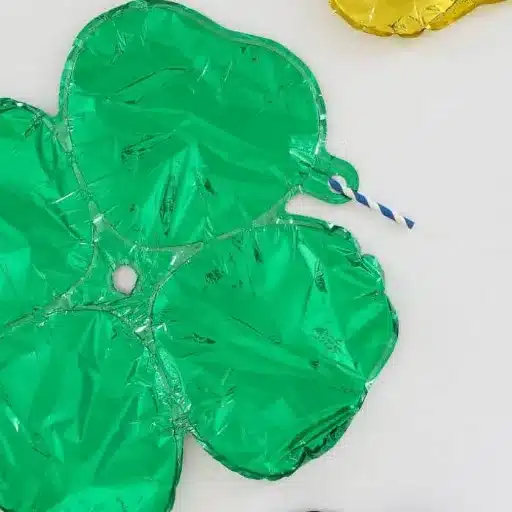
While deflating balloons, ensure that it is done slowly. Otherwise, they may just pop and scatter tiny pieces that may prove hazardous to wildlife. Do not let helium balloons go into the air, as this is one sort of litter that contributes to environmental degeneration. Once deflated, the balloons are thrown into appropriate solid waste bins, never left as litter in open places.
Using Inappropriate Tools for Deflating Balloons
While deflating balloons, the most common mistakes people commit is using non-specific tools for balloons; these unnecessary hazards could have been avoided in many instances. Scissors, knives, pins are most frequently used but sometimes pose great dangers, especially around children. Input from recent consumer safety reports reckons that balloon-related injuries approximate over 2,300 per year within the United States and are generally attributed to improper handling during balloon inflation and deflation activities. Also, the above tools increase the probable creation of smaller pieces, which are dangerous as they could become choking hazards for toddlers.
Deflation of balloons is best carried out by slow release of the air or helium by loosening the tied end of the balloon. For foil or Mylar balloons, manufacturers often give instructions or have integrated valves for controlled deflation. Also, balloon deflation tools facilitate the deflation process while minimizing risks to the operator and the environment. Proper deflation techniques adopted will reduce the risk of accidents and enhance environmental benefits.
Not Cleaning Up Remains in Time
Leaving behind remains creates an even more serious environmental and safety threat as afterbirth wastes from balloon activities. Fragments of latex balloons and that of foil, along with bits of string or ribbon, can remain in the environment for long after their usage, furthering pollution by all means. Research indicates balloons made of latex might degrade within four years in natural environments, while Mylar or foil balloons do not degrade within any time frame and will remain as long as they are not correctly disposed of. The attachment of strings or ribbons always worsens the problem because they can cause entanglement to wildlife or really hamper the working of machinery meant for waste processing.
In a highly-documented report by Ocean Conservancy, balloons were recorded to be the top-ten most common items retrieved during coastal clean-up exercises, pointing towards their vast contribution to marine litter. Such materials and items are often mistaken as food by marine animals, resulting in ingestion that leads to choking or intestinal blockage, or even death. It has been estimated by experts that balloon-related pollution affects more than 1,000 species of marine life annually.
Reference Sources
-
Balloons Online Blog
- Title: How to Deflate Foil Balloons the Right Way
- This blog provides a step-by-step guide on deflating foil balloons using a straw, ensuring proper handling and reuse.
-
TikTok Video by OhSnapLetsParty
- Title: Foil Balloons Deflating? Tips to Manage Decor Challenges
- A video offering practical tips and hacks for managing foil balloons during and after events.
-
The Homes I Have Made Blog
- Title: How to Deflate Mylar Balloons | Step-By-Step
- This source explains the process of deflating Mylar (foil) balloons using a straw and vacuum for efficient deflation and storage.
Frequently Asked Questions (FAQs)
How to Properly Deflate a Foil Balloon?
To deflate your foil balloon, place your fingers on the tab or valve found at the bottom of the balloon and gently pinch it to release air from inside as slowly as possible so that the balloon doesn’t get damaged.
Can the Refilling of a Mylar Balloon Be Done Since It Has Already Been Deflated?
Yes, it can be refilled. After deflating, you can go ahead and fill it up again with air or helium for another use. Just ensure that the balloon is clean and unobstructed by any leaks prior before refilling.
What Is to Be Done if There Is a Leak in the Foil Balloon?
If you find the balloon leaking, you might want to patch it with tape or use a plastic ribbon for balloon repairs. It shall hold the air for only a limited time, so the balloon will be reused only for short durations.
Is It Better to Use a Pin to Deflate the Balloon?
It’s not a very wise choice to use a pin to deflate a balloon because the whole thing might pop all of a sudden. Instead, at the tab or valve, pinch and release the air where it is safe.
How to Deflate Metallic Balloons Without Damaging Them?
To deflate metallic balloons, gently pinch the tab to let the air out. Remember never to puncture the balloon; a fast release could cause it to tear. A slow release keeps the whole structure intact for a second-time use.
Final Thoughts
By following these comprehensive guidelines for deflating and reusing foil balloons, you’re not only saving money but also contributing to environmental conservation. Remember to always prioritize safety, use appropriate tools, and dispose of any damaged materials responsibly. With proper care, your foil balloons can be enjoyed multiple times, making your celebrations both economical and environmentally friendly.

